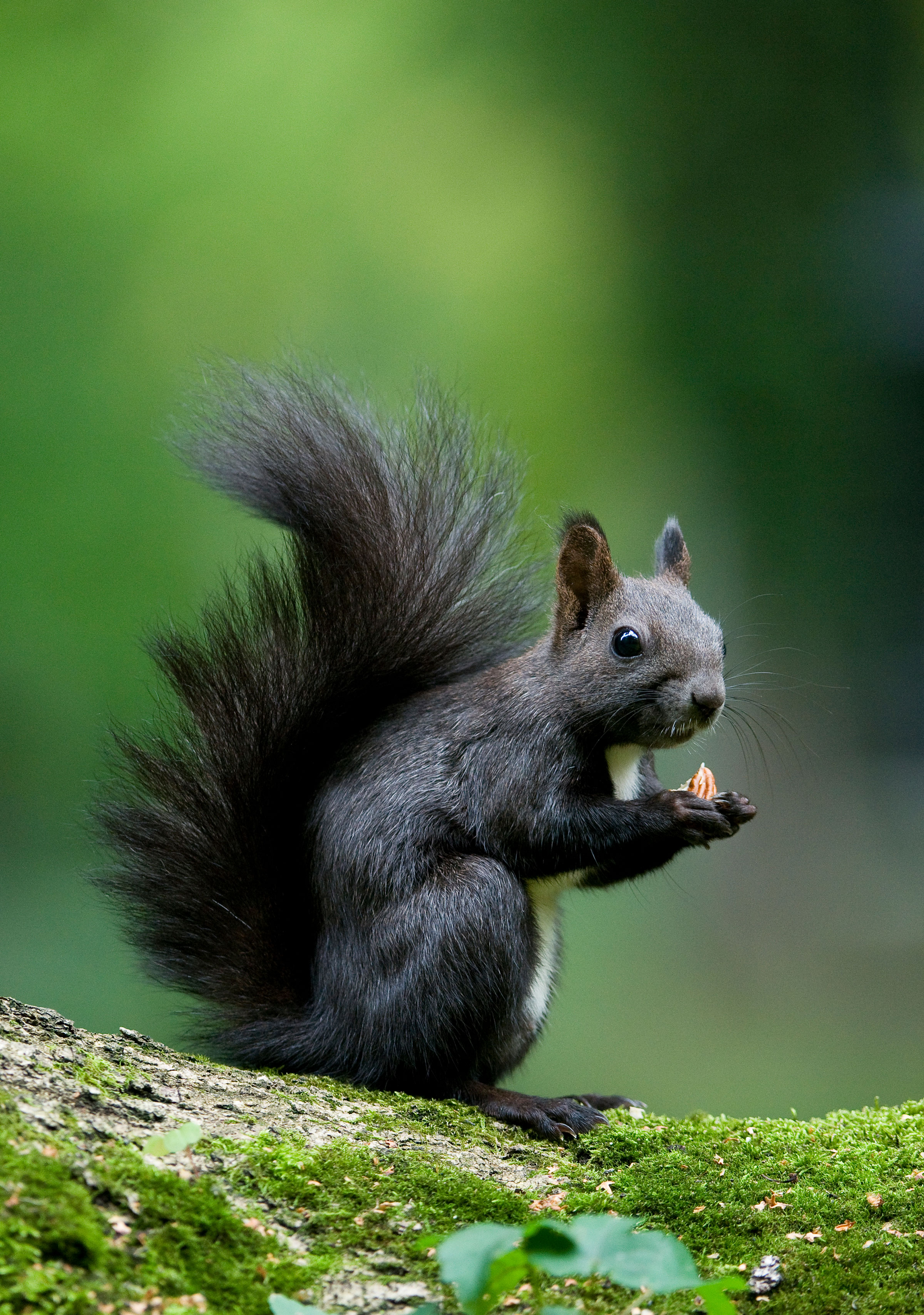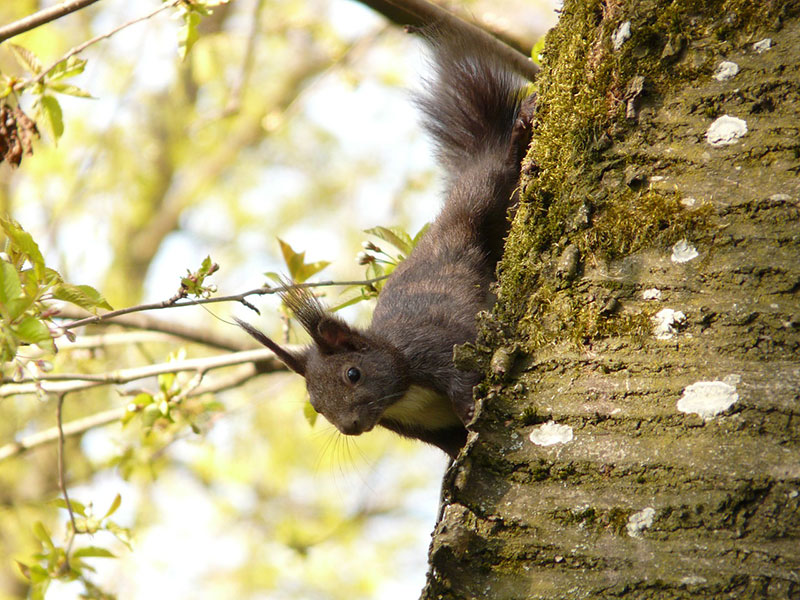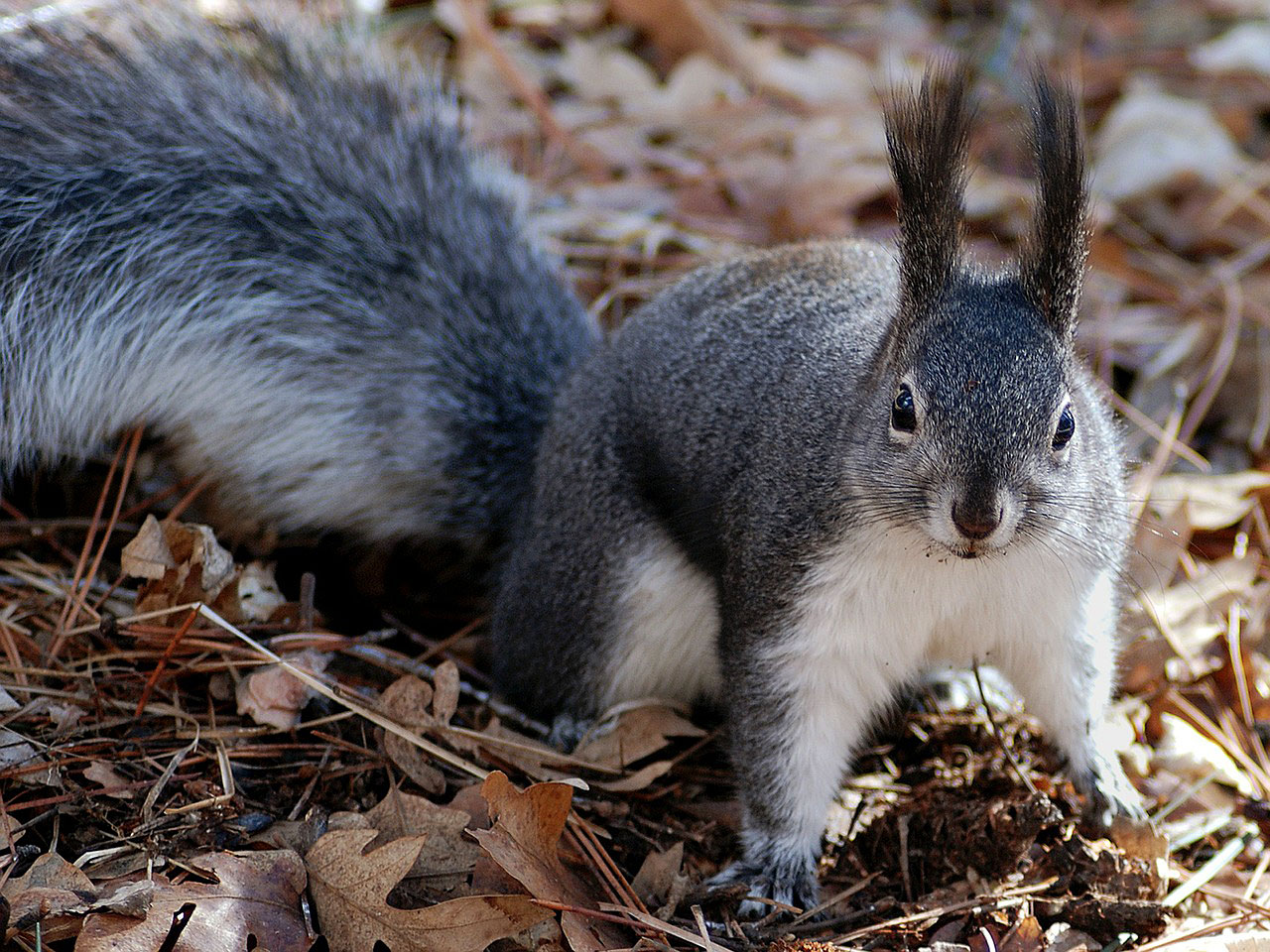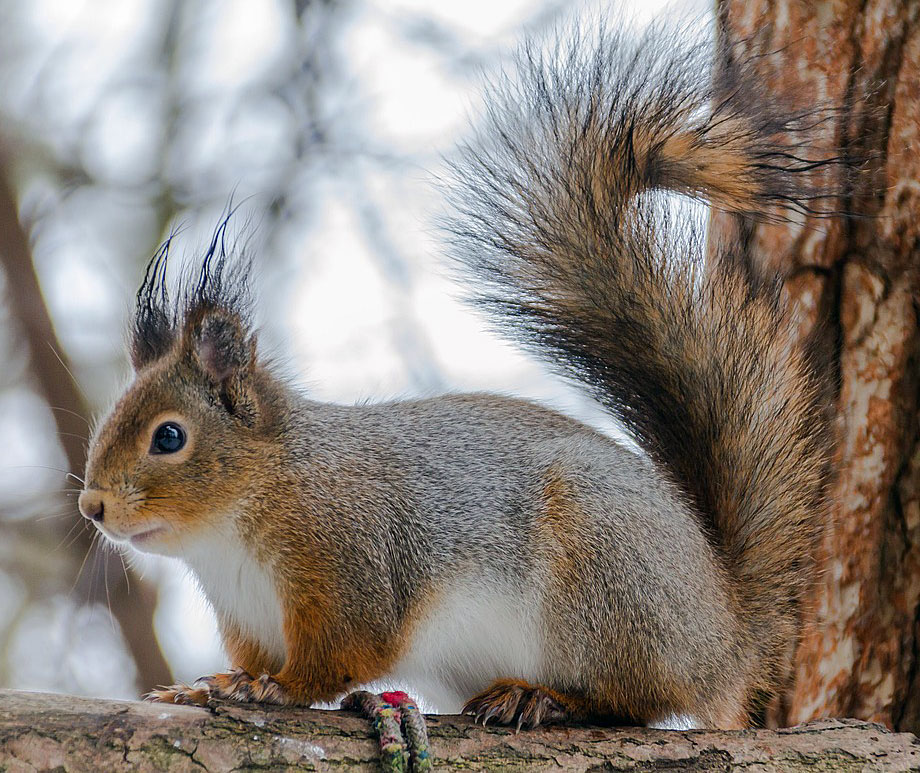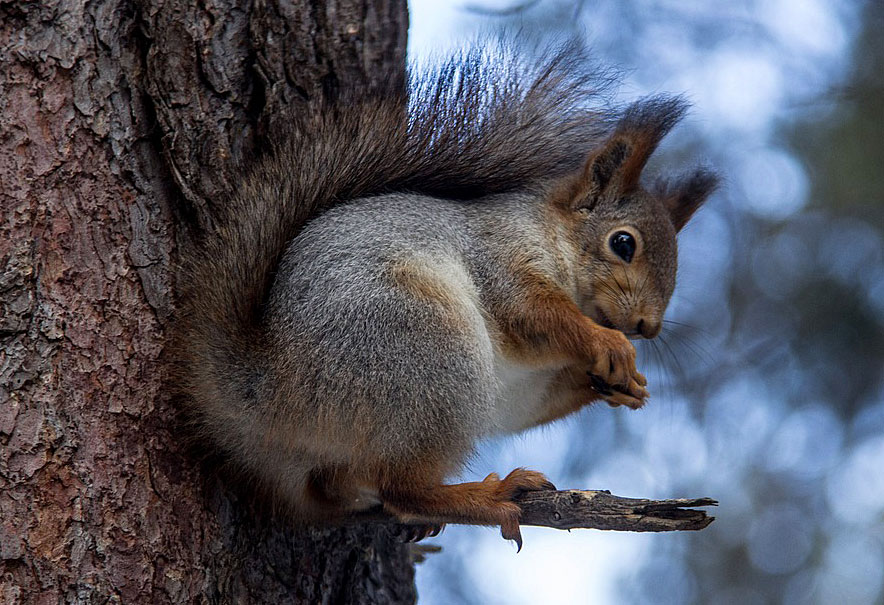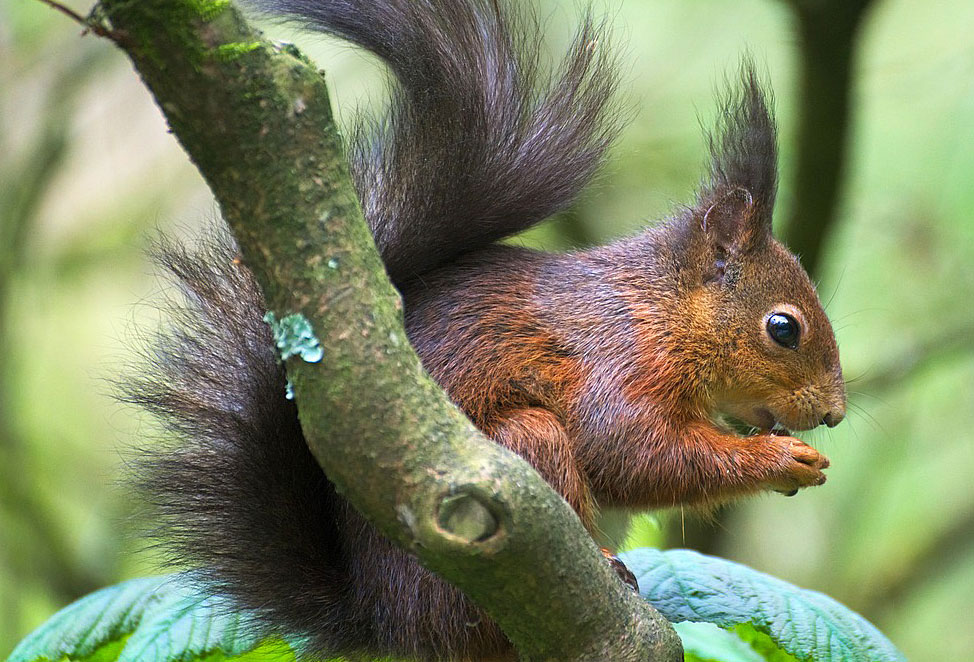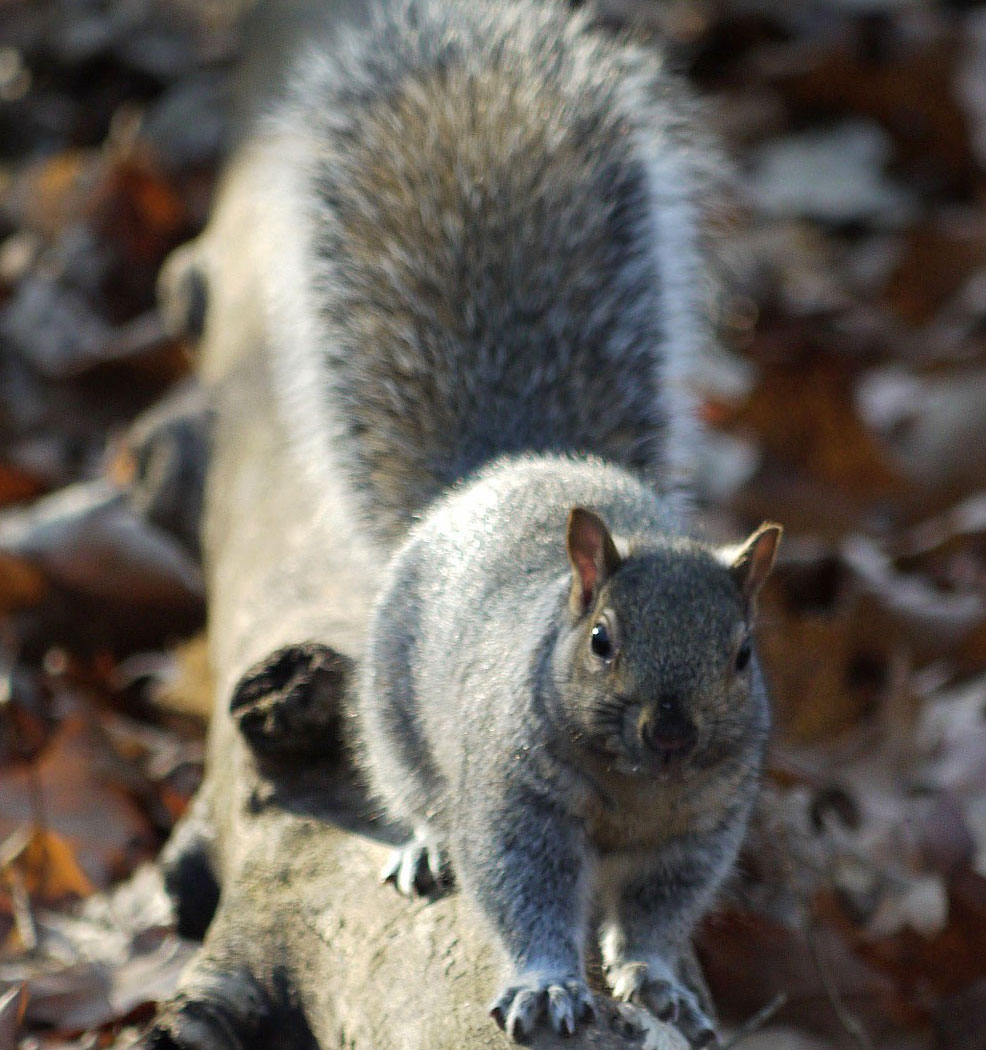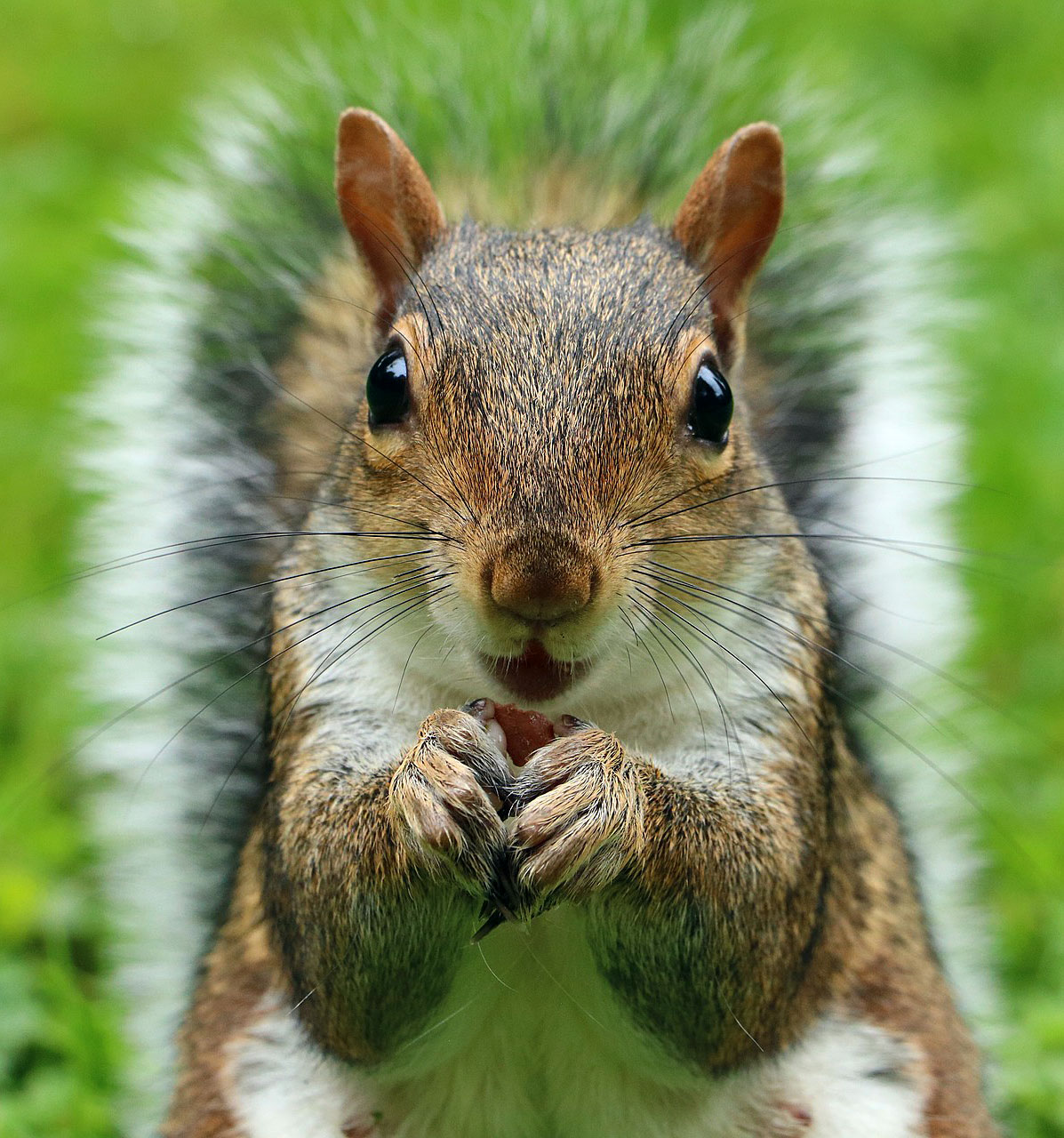In late summer they become quite active: The name of the game is to collect and hide rations, snatch up nuts and acorns before the competition does and increase the winter reserves. That's why they dash trough the trees and shrubs and gripe at the top of their voices together with their fellow brethren. A period of time filled with work begins for our squirrels when the fruits of the trees are ripe.
Squirrels – perfect climbers
Squirrels are perfectly adapted to life in trees. They are nimble climbers: Long rear legs with strong muscles allow them to climb and jump quickly. Long fingers and toes with sharp claws give them a secure footing - even on smooth tree trunks. Most important is the long, usually bushy tail which is fifteen to twenty centimeters long, about as a long as their torso. Squirrels use their tails to aid in balance when climbing and as a steering rudder when jumping.
Red, brown, grey, black - all squirrels
Our native one is the Eurasian squirrel (Sciurus vulgaris). Contrary to popular belief, this squirrel doesn't have to be colored just red. The variations in color range from red to red-brown, red-gray, brown-gray and all the way to the black. They all have the white belly in common.
The winter coat is shorter, thicker and more dense and has a high proportion of gray color. Exactly with such a specimen quite a few people think that this could be an introduced grey squirrel. However, this is not the case; the American gray squirrel (Sciurus carolinensis) hasn't arrived in Germany yet and it's only found in Great Brittan and Italy. It probably won't take long for the rodent to cross the Swiss border, however, it is questionable if the squirrel can cross the alps.
The gray squirrel - A problem for our squirrels
The gray squirrel is larger, heavier and more aggressive than our native climbing artists. Not only that makes them more competitive; the gray squirrel produces two highly populous litters in one year, it is less picky when it comes to food selection than our native squirrels, it finds stored rations more successfully, can consume under-ripe acorns and is more active in winter. In total, the gray squirrels are crowding out our European squirrels which is already evident in England.
In addition, the grey squirrels have a much larger problem stowed away in their luggage: they transfer the parapoxvirus, the so called squirrelpox. The American "immigrants" do not become sick from this virus, however, an infested European squirrel will usually die within two weeks after contracting the illness.
